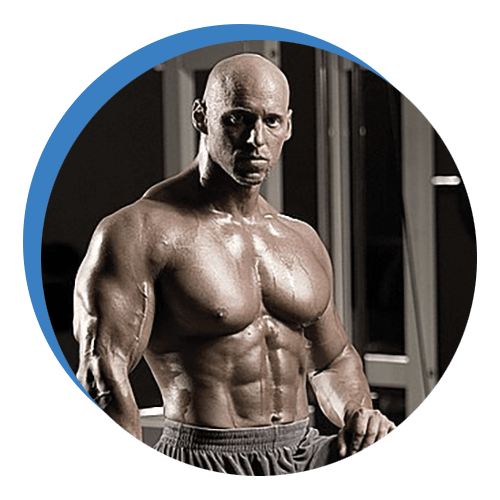
8 WAYS TO BREAK SIZE PLATEAUS
There is little doubt that the first year or two of training are the most fun, and for the majority of us gym rats, the


“After a few months of using the ESPX2 training method, you will not need ESP to know what people are thinking when they see you. “Wow, this guy is huge,” will be written all over their shocked faces!” – Coach EB
There is little doubt that the first few years of training are the most fun – and this is likely because, for the majority of lifters, they are also the most productive. Back in your early days of hitting the gym, I bet that you got stronger at just about every workout–pressing, squatting, rowing, and curling heavier weights at each and every session.
Even more remarkable (and gratifying) was witnessing your muscles grow almost magically every week – manifesting a thicker chest, wider back, rounder shoulders, and swelling limbs faster than a baby pup becomes a full-grown dog!
In fact, if you were anything like me back then, you would probably jump on the scale every night and see if you gained any precious body weight. “Cool! I’m up another three lbs. from last week!” Yes, those certainly were the days, when all you had to do to add on muscle was eat more, train more, sleep more, and presto…there was more – of YOU!!
But then the inevitable occurs. As you begin to make the transition from beginning lifter to the more “seasoned” bodybuilder things just don’t work like they once did. Gains in muscle size become less and less apparent. The weights you push and pull no longer climb at every workout. Your bathroom scale spits back the same number every night – no matter where you put your feet on the darn thing.
Despite putting forth what you feel are your best efforts in the gym – plugging away on your tried-and-true routine – nothing meaningful seems to be happening anymore. “So, tell me ‘Merlin,’ what gives?”
They may call me “Merlin” but keeping one’s muscles growing progressively and continuously has nothing to do with spells or magic. – But rather, biology. What you first must recognize is that the human body was “built” to adapt. In one sense that is actually great, because this (our amazing ability to adapt) is precisely what helps to ignite hypertrophy in direct response to intense weight training.
However, on the other side of the coin is the part that complicates matters! You see, we are just so good at this adapting thing that after a period of time our muscles and central nervous system become “bored” with the “same ole, same ole,” and no longer see any reason to switch on anabolic processes.
In other words, after a few years of training the same way week in and out (i.e., the same exercises, rep numbers, rep tempos, etc.) the body is no longer compelled to overcompensate by adding more muscle. Ok, so what now?
Over the past few years, a number of very intelligent researchers have scientifically proven something that many of the world’s best coaches learned “in-the-trenches,” through decades of observation, experimentation, and patience – Exactly what methods of training stimulate muscle growth.
It has been concluded that hypertrophy occurs via three primary mechanisms: (1) mechanical tension, (2) metabolic stress, and (3) muscle damage. Thus, once you have put a few years in at the gym, your training can no longer remain “one-dimensional.”
Well, not unless you want to remain the same size. Instead, you must utilize lifting strategies that effectively tap into each of the pathways that initiate muscle growth – at each and every workout.
Enter ESPX2!
Since around 1998 I have developed and pioneered four different and unique training systems (i.e., PRRS, FDFS, FTX2, and now ESPX2) and all of them have been named with acronyms!
Is this because I love acronyms? No, but they take up far less space in articles and sound way more exciting than what they actually stand for (LOL). However, I do believe it is important when introducing a new system, to explain what each letter specifies (and what its importance is) – so here it goes:
E = Eccentric (focusing on the negative contraction of the exercise to create both mechanical tension and muscle damage)
S = Stretch (focusing on the stretch position of the exercise to create both mechanical tension and muscle damage)
P1 = Peak Contraction (focusing on the “squeeze” of the exercise in order to recruit the largest motor units and increase “neural drive”)
P2 = Pump (focusing on manifesting the greatest possible blood flow to the target muscle to induce metabolic stress)
Let’s now get to the good stuff! With ESPX2 you will be using four different exercises per muscle group at each workout, with each tapping into a different pathway that will trigger hypertrophy. The two major keys to really making this system work lie in closely following the unique rep tempos for each movement, and in choosing the best exercises for each “component” of the system (i.e., eccentric, stretch, peak contraction, and pump).
To clearly illustrate how to properly implement ESPX2 I have provided two sample workouts below:
Note: Tempo refers to the speed at which one completes the various contractions within each repetition. It is expressed in seconds, with an “X” meaning “as explosively as possible.” The first number is seconds for the eccentric (negative) contraction; the second number is seconds at the midpoint/stretch; the third number is seconds for the concentric (positive) contraction; and if there is a fourth number, this refers to the peak contraction or squeeze at the end of a repetition.

There is little doubt that the first year or two of training are the most fun, and for the majority of us gym rats, the

There is a saying I like to use when discussing the kind of intensity it often takes to ignite hypertrophy: “If you want your muscles

